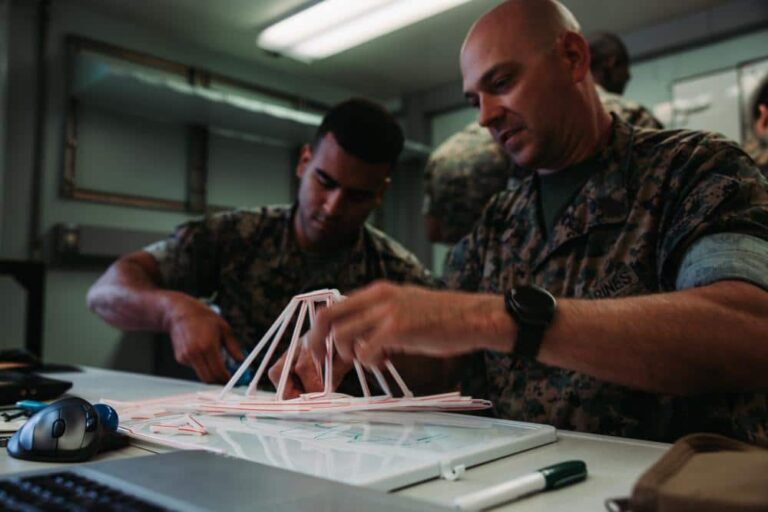
The US Marines’ II MEF Innovation Campus, recently hosted level one and two additive manufacturing courses for US Marines, along with the Marine Aviation Logistics Squadron (MALS) 49, the Marine Aircraft Group 49, and the 4th Marine Aircraft Wing (MAW), at Stewart Air National Guard Base in Newburgh, New York. Supporting the service-level modernization initiative known as ‘Force Design 2030’.
The additive manufacturing course familiarized both active-duty and reserve service members with computer-aided design (CAD) software and taught students a variety of innovative problem-solving techniques.
Since August 2020, the II MEF Innovation Campus has provided three separate training evolutions to MALS-49 and 4th MAW.
For this iteration, the Innovation Campus’ mobile training team ran two different course levels – basic and advanced. The course culminated with MALS-49 hosting their second annual design innovation challenge.

A panel of judges evaluated the students’ design concepts. Submissions included an easily replicable MK 49 bandoleer for pocket pen flares used by the crew of a downed aircraft, a locking mechanism for a tug horn connector that prevents cables from separating due to movements of the motor vehicle, and large printed tactile name plates that can replace weathered plates following adverse weather effects.
Following course completion, the avionics Marines will conduct nine months of on-the-job training to receive the additive manufacturing specialist additional military occupational specialty.
In total, 32 US Marines along with MALS-49 were trained by the Innovation Campus staff. The course also directly supported innovation efforts falling within the Marine Corps’ service-level modernization initiative, Force Design 2030.
Going forward, MALS-49 additive manufacturing will continue to support Force Design 2030 as its Marines prepare to transition into the recently-launched Marine Innovation Unit’s Innovation Laboratory Branch at Stewart Air National Guard Base.
“The idea is that there’s a pool of talent across the Marine Corps with abilities, knowledge, and drive to advance from normal business practice, and we should cultivate that,” said Guido. “A part of Force Design is being able to increase our mission capabilities and overall readiness using some of the skills and talent we have organically in our fighting forces now.”